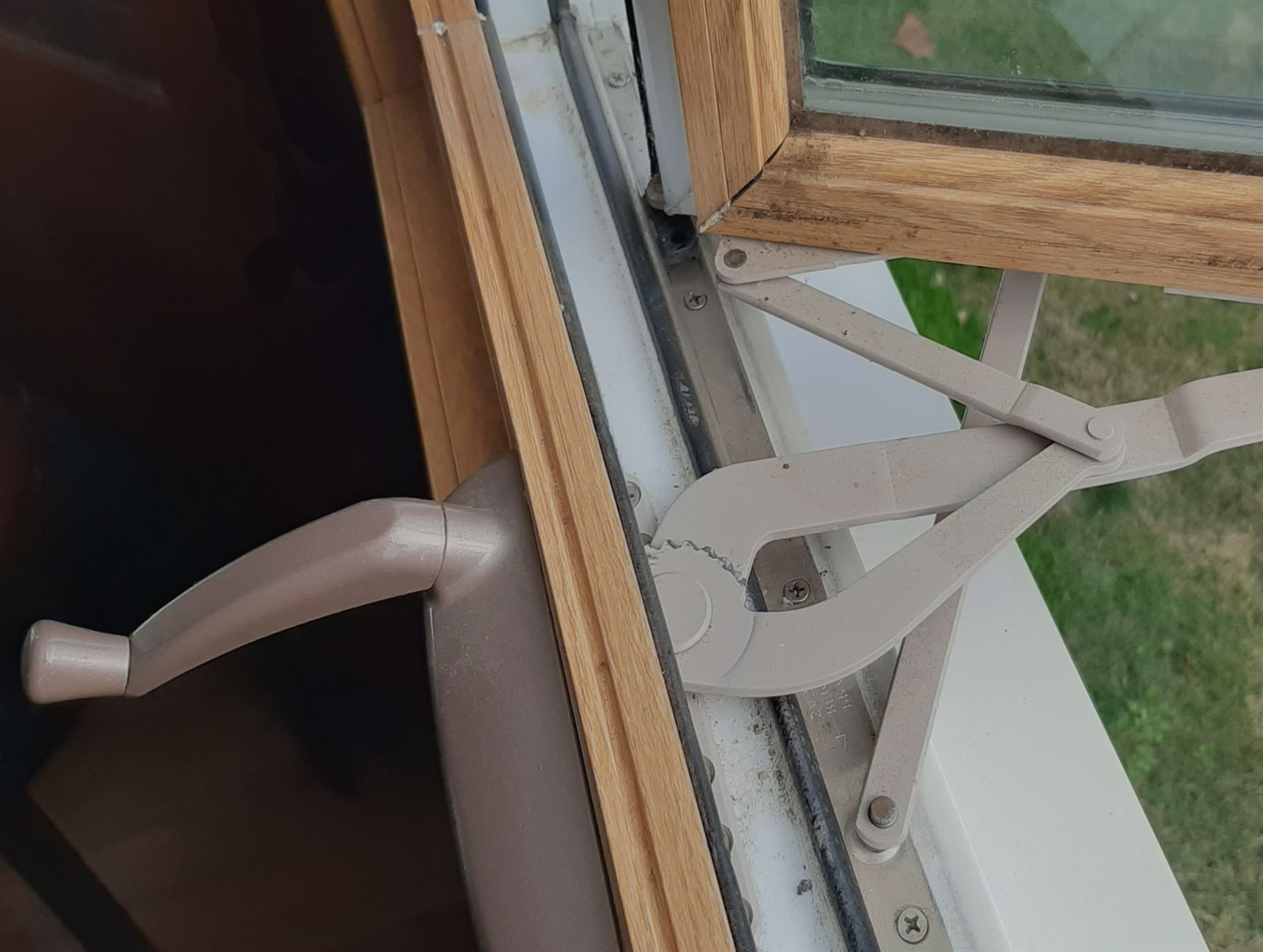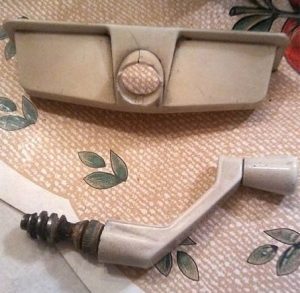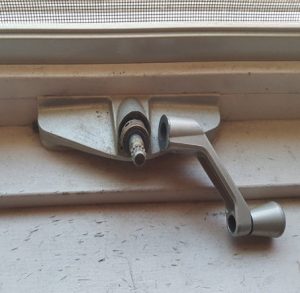Welcome to our extensive guide to window parts, expertly developed to give detailed insights into every aspect of window assembly. We’ve methodically split out each critical topic into nine separate chapters to ensure simple navigation and comprehension for readers of all skill levels. From balances to operators, hardware, and beyond, this book provides a thorough examination of each component’s operation and importance in the overall performance of Windows.
Chapter I. Introduction to Window Hardware Parts
Have you ever wondered about the numerous components that comprise your house window and their functions? In this chapter, we will learn about the most typical house window hardware components. Each component of the window, from the handles and locks to the hinges and tracks, contributes uniquely to its operation. The more you understand these components, the easier it will be to maintain your windows or identify appropriate replacements.
Chapter II. The Importance of Window Handles
The handle functions as an interactive tool for your window, adding ease and usefulness. Window handles come in a variety of shapes and materials and allow you to easily operate your windows, whether you want to let in fresh air or protect your property from invaders. Their shape and location are critical for accessibility, with certain handles tailored to specific window types like casement or sliding windows.
Chapter III. Understanding Window Locks: Types and Functionality
Window locks are next on our list. These physical components are designed to prioritize your home’s security. Window lock types vary depending on window design, including wedge locks, key-operated locks, and even sash locks. The primary goal is to prevent unauthorized entry to your premises—security and peace of mind go hand in hand, after all.
Chapter IV. Window Hinges: A Critical Hardware Component
Window hinges are essential components that work quietly behind the scenes. They link your window’s sash to the frame, allowing for seamless opening and shutting. Hinges can be side-hung or top-hung, depending on the direction your window opens in. A well-maintained hinge provides smooth functioning, but a rusted or damaged one might cause window malfunctions or safety hazards.
Chapter V. The Role of Window Tracks Systems
Have you ever wondered how your sliding or double-hung windows glide so smoothly? The secret is in the window tracks or runners. These channels govern the movement of your window sashes, allowing for simple and smooth opening and shutting. Maintaining clean tracks ensures that your windows perform well and last as long as possible.
Chapter VI. Window Sash: A Key Player in Window Operation
A window sash is the section of the window that contains the glass panes, stiles, rails, and, if applicable, muntins. It is the section of the window that can be moved. The shape and substance of your windows’ sashes have a considerable influence on their overall attractiveness and energy efficiency. Furthermore, appropriate installation has a significant impact on the windows’ operability.
Chapter VII. Window Tilt Latches: Ensuring Stability
Window tilt latches are necessary hardware components that maintain your windows in a certain position when opened. They are especially useful for casement windows and windows that are exposed to wind pressure. Without window tilt locks, it might be difficult—or even dangerous—to keep your windows open when needed.
Chapter VIII. Window Operators and their Significance
Window operators, which are commonly seen on casement or awning windows, help to open and close the windows using a crank mechanism. They are simple to use and can be an essential tool for persons with limited strength or mobility. Proper installation and maintenance of operators are critical to the operation of your windows.
Chapter IX. The Often-Overlooked Window Springs
Last but not least, window springs are essential to the smooth, simple operation of numerous windows. They provide balancing support for the sashes, making them easier to raise or slide. These powerful small components, frequently neglected, sustain the weight and maintain your windows in perfect balance. Keeping your springs in excellent condition will help your windows last longer and operate better.
Chapter I. Introduction to Window Hardware Parts
In our daily lives, we frequently overlook the delicate functionality of our homes, including windows. Windows are more than just glass panes through which we may see the outside world. Windows is a harmonic combination of many hardware components, each of which serves a distinct purpose to ensure the system’s proper operation. Learning more about these pieces can help you learn how to maintain them, recognize problems when they emerge, and locate replacements.
Each window contains various critical components, including handles, locks, hinges, tracks, and so on. The handle is your primary point of contact with the window, allowing you to easily open, close, or lock it. Locks give additional piece of mind by protecting the window from prospective invaders. Hinges act as pivots for the window’s opening and closing, while tracks or runners guide the smooth movement of the sashes in sliding or double-hung windows.
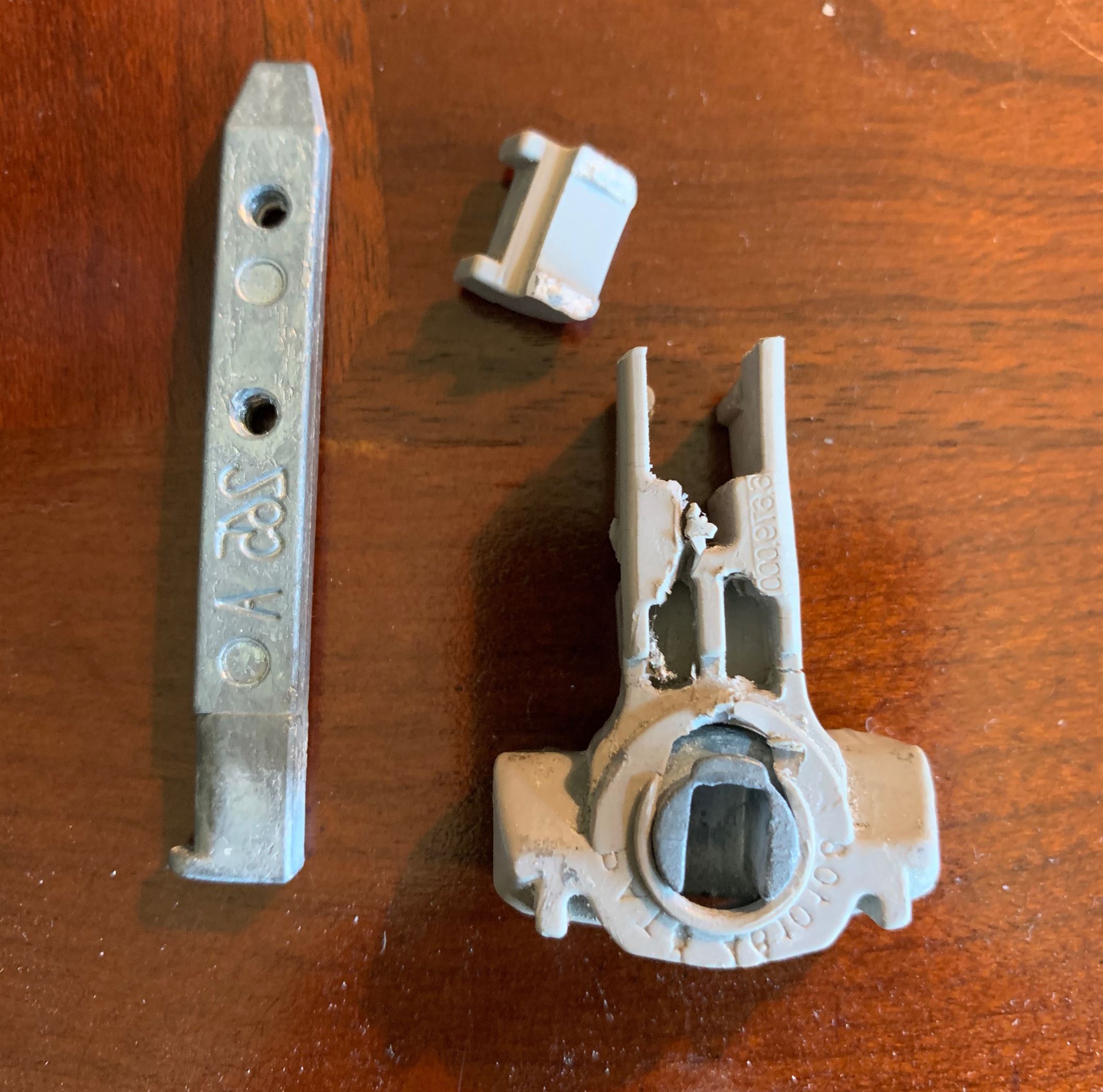
However, this broad pattern is not universally applicable. Different types of windows, such as casement or sliding windows, may require unique hardware configurations. This vast variation can add to the complexity, but it also piques interest because the science underlying each window design is tailored to its specific purpose. Casement windows, for example, employ stays and operators to help open and hold the window in place, whereas double-hung windows use balances, a sort of spring, to keep the window up when opened.
However, the need of regular examination and repair of window hardware cannot be overstated. By taking the time to learn how your windows function and periodically checking on them, you can assure top performance, prolong their service life, and improve the safety and comfort of your house. After all, a well-preserved window does more than simply give a view; it also lets in natural light, keeps the weather out, and helps to improve your home’s energy efficiency.
A Detailed Breakdown of Window Components for Enhanced Functionality
A window is a complex structure made up of different components, each of which serves an important function. Let us deconstruct these aspects to better understand their responsibilities in the window’s overall performance. The handle, as the human touchpoint of a window, allows for smooth functioning. The handle allows you to alter the angle of your window with a simple push, pull, or twist, allowing fresh air in or keeping the elements out as needed.
Next in line, window latches play an important safety role. They keep your window closed, preventing unlawful access from the outside. Window locks are available in a variety of styles to fit different window types, but the goal is the same: to provide you with peace of mind that your house is secure. Stepping behind the scenes, we discover the hinges. Hinges, which sometimes go unseen, provide an important role by connecting the window to its frame and allowing for the rotation required for opening and shutting. Depending on the style of window, they can be side hung or top hung, allowing them to open in the desired direction.
Finally, the tracks or runners deserve a notice. These channels are especially crucial for sliding or double-hung windows because they direct the smooth, linear movement of the window sashes, which contributes considerably to your window’s smooth functioning. They support the weight of the sashes and prevent friction as you slide the window open or closed. Each of these components works together to provide the ease, security, and functionality that we demand from our home’s windows. Understanding how they work may help homeowners identify problems and perform maintenance as needed, guaranteeing the longevity and effectiveness of their windows.
Exploring the Intricacies of Window Components Across Casement, Sliding, and More
The world of windows goes much beyond the conventional pane of glass with a lock and hinge. Different window styles introduce us to a variety of hardware parts, some of which are unique to a certain type of window. This multiplicity of components provides each window design its distinct functioning, and while it complicates our understanding of window hardware, it also makes the topic more appealing. Consider the example of casement windows. These windows, which are hinged on the side and open outward like doors, require what is known as a’stay’ or ‘casement stay’. It’s a physical component that keeps the window open in a set position, preventing it from closing on windy days. Furthermore, casement windows frequently contain ‘operators’—mechanisms that allow the window to open and close by rotating a handle.
On the other hand, sliding windows travel horizontally down a track. Their tracks or runners and roller wheels provide smooth functioning, which contributes to their simplicity of motion. They may also contain a special form of lock known as a catch, which provides secure closure. Finally, double-hung windows, which may open from both the top and bottom, use balances, a sort of spring system, to counterbalance the weight of the sashes and keep them open in either position. Exploring these distinct hardware components not only helps us gain a better knowledge of our windows, but it also instills a respect for the design and engineering complexities of something as deceptively simple as a window.
Regular Inspection and Maintenance in Extending Window Lifespan
The lifetime and efficiency of your windows are heavily dependent on frequent examination and repair of their hardware components. These pieces can wear out, become misaligned, or become damaged over time, and it is our obligation as homeowners to keep a look out for and remedy any such concerns as soon as they appear. Window handles can become loose or shatter as a result of repeated use. Regularly tightening their screws can avoid any operational issues. The hinges may corrode with time, preventing the window from opening or shutting smoothly. Regular use of an appropriate lubricant can help prevent corrosion and keep the hinges moving freely.
Dust and dirt can accumulate on a window’s sliding track, which directs the movement of the sash. Regular cleaning of these tracks helps to maintain the smooth sliding action we seek. Meanwhile, seals forced into the background may age, shatter, or become dislodged, resulting in air leaks and severely reducing your home’s energy efficiency. Minor seal issues may usually be resolved with a sealant, but more severe deterioration may necessitate total seal replacement. Regular inspections also allow you to confirm that all locks are working properly and maintaining the essential security level. Similarly, examining the operation of the operator in a casement window or the balance in a double-hung window can prevent unexpected breakdowns and perhaps extend the window’s lifespan.
In summary, taking a proactive approach to caring for and maintaining the various components of your windows not only ensures proper operation but also increases the window’s lifespan, making your investment worthwhile. It is one of those home maintenance tasks that pays off handsomely in terms of comfort, security, and significant energy savings.
Chapter II. The Importance of Window Handles
Handles are possibly the most often used window hardware components. They serve as important touchpoints, bridging the distance between us, the users, and the windows we use virtually daily. Whether it’s to welcome a pleasant breeze on a hot afternoon or to keep the winter cold at bay, grabbing for the handle is our first move. However, their handles provide more than simply a hold. They make our window operations more convenient. Depending on your window style (casement, sliding, or double-hung), the handle design allows you to easily open, close, and secure your window. So much so that we frequently take this benefit for granted, rarely realizing the critical role that these handles provide.
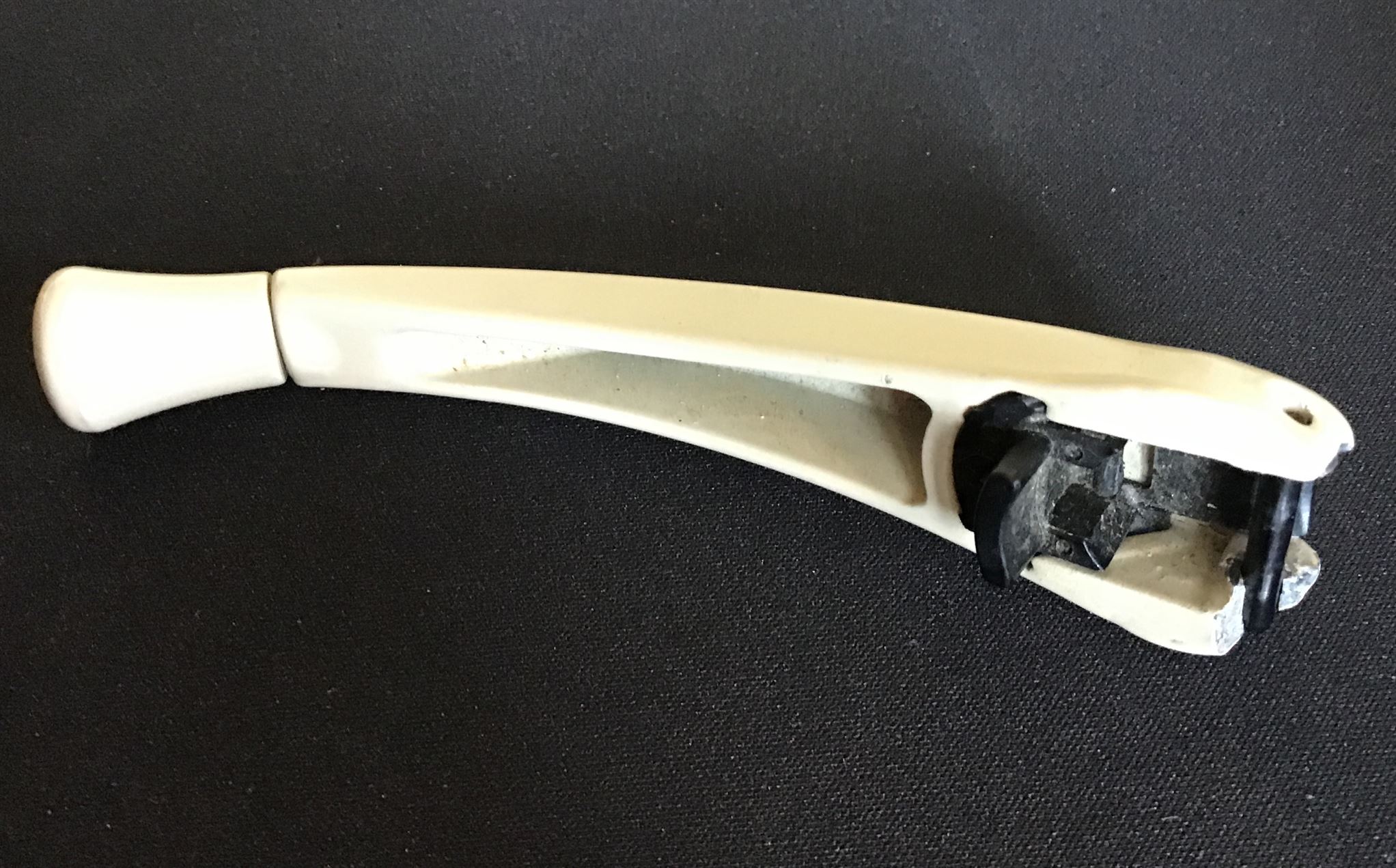
Furthermore, handles coordinate with other hardware pieces to provide this ease. Together with internal components like as the locking mechanism, hinges, and runners, they provide a user-friendly interface that allows you to manage the operation of your window with a single motion. In essence, window handles, despite their appearance, are essential components that allow us to operate the windows with ease. They exemplify the principle of excellent design: combining form and function to improve user experience.
Window Handle Styles and Materials Across Different Window Types
Window handles serve both practical and aesthetic purposes, adding to the overall appearance of the window and, by extension, your home. They are available in a wide range of designs, materials, and finishes, allowing you to complement or contrast with your home’s interior décor and architectural style. Let’s take a look at window handle designs. There are several options available, ranging from the traditional lever or crank handles used in casement windows to flush or recessed handles that integrate perfectly with the window surface, which are often seen in sliding or tilt-and-turn windows. Some designs even include locks, which combine functionality and security into a single physical component.
Furthermore, they are made from a variety of materials, each with its own distinct character and advantages. Handles are often made of sturdy metals such as brass, stainless steel, or aluminum, with finishes such as polished chrome, old bronze, or brushed nickel. Wooden handles add a warm, homey vibe. Contemporary models may also have handles made of composite materials, which combine the benefits of numerous features.
Finally, it’s worth noting how closely the handle style is related to the window type. A casement window may have a rotating lever or crank handle, but a sliding window would normally have a minimalist, low-profile handle that does not interfere with the sliding operation. In brief, window handles seamlessly combine use and aesthetics, resulting in a perfect balance that enhances the practicality and visual appeal of your home.
Handle Placement and Design for Ease of Use
Designing and situating window handles involves more than just looks; it’s also about utility and accessibility. The design and position of the handle have a significant impact on how simple it is for someone to operate the window, whether they are a toddler, an adult, or have restricted mobility. As a result, careful consideration of these elements may considerably improve the overall usefulness and experience of operating a window.
For example, a handle positioned too high on a window may be difficult to reach for shorter people or children. However, if the handle is positioned at the bottom of a big window, it may be difficult to use for people who have back difficulties. As a result, a medium height that is easily accessible to the majority of people is frequently the best option. The design of the handle is also important. A narrow or slippery handle may be difficult to hold, particularly for older adults or people with certain health issues that impair their dexterity. In such instances, using an ergonomically constructed handle with a solid grip might make all the difference.
Furthermore, for some window designs, such as casement or awning windows, a crank-style handle that takes less force to operate can be significantly more handy than a traditional knob or lever. For sliding windows, a slender, latch-style handle that blends into the window frame’s shape may be preferable.
In summary, understanding the demands of the residents as well as the window type is critical for making educated judgments about window handle design and location. This can improve overall simplicity of usage and make the windows really accessible to everyone in the house.
Consequences of Faulty Window Handles
Window handles, like any other piece of hardware, are susceptible to wear and use, breakage, and defects. These concerns, no matter how little they appear, can grow and lead to more serious problems if not handled promptly. A defective handle can cause operational issues as well as possible security risks, thus it is critical to evaluate its functionality on a regular basis. The most obvious issue is difficulty running your window. A damaged or jammed handle can make it difficult to open or close a window, interrupting the ventilation in your home. This might be especially troublesome in circumstances requiring immediate ventilation, such as removing cooking smoke or cooling a heated space.
A defective handle may potentially interfere with the window’s locking mechanism. If the handle does not spin properly, the lock may not engage as expected. This takes us to the second key issue: compromised security. The inability to lock your windows owing to a defective handle makes your home susceptible and poses a security concern. In rare circumstances, a damaged handle might cause issues with the window’s seal. If the window does not fully close because the handle cannot secure it in place, it may enable drafts and leaks, resulting in an unpleasant indoor temperature and increased energy costs.
Finally, while a window handle may appear to be a simple piece of hardware, it plays an important function in window operation and home security. Recognizing and correcting handle flaws is critical for keeping a pleasant, secure, and efficient home environment.
Chapter III. Understanding Window Locks: Types and Functionality
When considering window functioning, we frequently focus on factors such as energy economy, ease of use, and aesthetic appeal. While all of these factors are important, none outweigh the crucial function that a window plays in providing security to your house. What is the major component that facilitates this security? The window becomes locked.
These simple hardware features, which are often disregarded, serve as the first line of security against prospective intruders or accidental opening by youngsters. Their presence heightens the sense of security within the four walls of your house, guaranteeing you that your windows will remain firmly closed unless you specify differently. They stand watch, defending your sanctuary as you sleep, work, or enjoy happy times with family.
In short, window locks play an important part in house security. They not only prevent unwanted entry into your home, but they also provide piece of mind since, with an engaged lock, your windows act as strengthened barriers against the outside world. Thus, having a thorough awareness of window locks, their varieties, performance, and maintenance is an important element of home security measures.
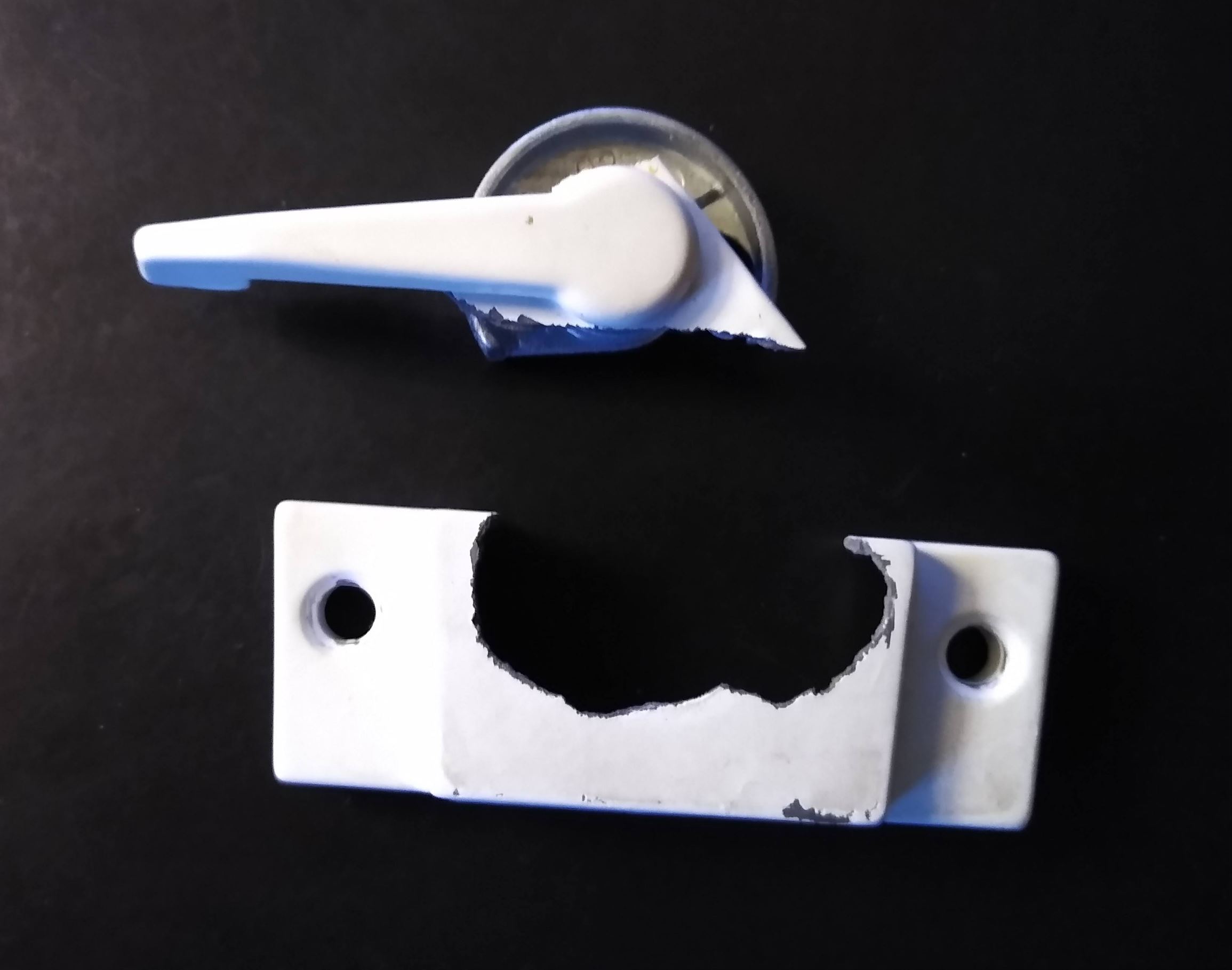
Window Locks and Installation Techniques
Window locks are not one-size-fits-all; they differ in design, functionality, and installation procedures. The sort of lock you choose is usually determined by the window design as well as your individual security requirements. Take, for example, the wedge lock. They are commonly used with sliding windows. As the name implies, these locks employ a wedge that, when engaged, stops the window from sliding open. They are simple to operate, but their effectiveness is greatly dependent on the installation precision.
Then we have key-operated locks, which are often seen on casement windows. They need a key to activate or deactivate, providing an additional degree of protection. It is critical, however, to remove the key while the lock is not being used to prevent it from being modified from the outside. Sash locks are another form of window lock that is commonly used on double-hung windows. They hold the two sashes together in a closed state to prevent them from being slid open. As a result, its installation necessitates exact alignment on both sashes to achieve a secure lock.
Understanding the various lock types provides a solid foundation for selecting what’s best for your windows. Each kind serves the same purpose: to improve home security, but their performance is heavily dependent on proper window selection, expert installation, and frequent maintenance.
Safeguard Your Home and Deter Unwanted Intruders
Controlling access–who may enter, when, and how–is typically at the heart of home security. Window locks that are strategically designed and properly fitted can help to create such control by deterring unwanted access. While a closed door is a clear deterrent to burglars, an unsecured window may appear to be a more attractive option. The proper type of installed lock can considerably lessen this risk. Windows frequently ships with specified types of locks; however, this does not preclude you from upgrading or adding to them based on your security requirements. For example, a ground-floor window may require additional protection owing to its accessibility, and adding a keyed lock to its pre-existing latch might give that extra layer of security.
Furthermore, window locks do more than just prevent incursion; they also regulate undesired access within the home, which is especially important for houses with young children. Safety locks can limit how far the window opens, preventing children from accidently climbing through, giving you piece of mind. Finally, the window locks you choose and install should be adapted to your specific security needs. It’s important to realize that each lock type has advantages that, when used effectively, may provide a strong line of defense, significantly strengthening your home’s security situation.
The Importance of Routine Inspection and Maintenance
While it is critical to install safe window locks, the task does not end there. Window locks, like any other mechanical component, require regular inspection and maintenance to work properly and provide reliable security. Locks that are often used or exposed to harsh weather conditions may deteriorate with time, preventing them from functioning properly. A key-operated lock, for example, may have internal mechanisms blocked owing to corrosion or dirt, making it difficult to turn the key. Alternatively, the hook and latch on a sash lock may misalign owing to the moving of the window frame over time, causing the lock to not engage correctly.
Regular examination allows for early diagnosis of such situations. In many situations, basic maintenance routines such as cleaning the lock, using lubrication to ease moving parts, tightening loose screws, or adjusting components will restore the lock to full functionality. However, if the lock is damaged or extremely worn out, it is best to get it changed right away. When it comes to home security, there is no room for compromise, and a properly working window lock is essential. Understanding that window locks require maintenance is critical to maintaining a secure home environment.
Chapter IV. Window Hinges: A Critical Hardware Component
When it comes to window functionality, several components, which are generally hidden, perform crucial functions in the background. Window hinges fit squarely into this category, with their subtle but crucial action often going unnoticed. These tenacious little warriors bear the weight of the window sash and act as pivots to control the window’s opening and shutting action, a feature we often take for granted.
A window hinge, like a door hinge, is designed to enable rotation around a fixed axis. Hinges, which are essential components of many window designs, particularly casement and awning windows, allow your window to transition from a static wall piece to a dynamic source of ventilation and view. Given their critical role in window functioning, hinges can resist a lot of wear and pressure, especially in frequently accessible windows. Nonetheless, they meekly continue to perform, frequently without a second thought from us, the consumers.
In essence, window hinges are one of the most critical components of our windows, working behind the scenes to ensure not only the window’s ability to open and close smoothly, but also its security and durability over time. A much-needed reminder that hidden components may play important roles in functionality.
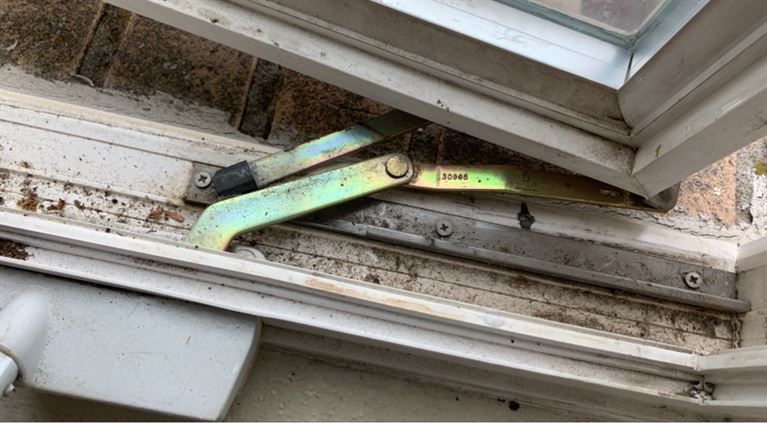
Role of Different Hinge Types in Determining Window Movement
Although window hinges appear simple at first appearance, they exist in a number of styles, each tailored to a certain window style and direction of opening. The two most prevalent forms are side-hung and top-hung hinges.
Side-hung hinges are commonly found in casement windows, which swing open like a door. They are mounted on the window’s vertical side and allow it to pivot horizontally. This design allows for a broad opening angle, which improves ventilation and makes it easier to clean the exterior of the window from within your home.
In contrast, we have top hung hinges, which are utilized in awning windows and some types of casement windows. As the name implies, these hinges are located on the top border of the window, allowing it to tilt outward from the bottom. This solution has numerous advantages: it allows for ventilation while retaining a certain level of security and keeps rain out even when the window is partially open.
The form and functioning of the window heavily influence the hinge type used. You can ensure that your windows function and last for a long time by matching the suitable hinge with the appropriate window type. It’s intriguing to see how small details in window hardware design can have a big influence on a window’s shape and function.
Well-Maintained Hinges = Effortless Window Operation
The hinges must be maintained on a regular basis to ensure that the windows function properly and stay balanced. Window hinges, especially in regularly used windows, are subjected to a great deal of constant usage and stress – opening and closing, carrying the weight of the sash, and, on occasion, surviving additional wind pressure while left open. These hinges, like other hardware pieces, can wear out over time, causing them to operate less smoothly.
There are various indications of poorly maintained hinges. They may squeak during operation, a window may not stay open as intended, or in severe circumstances, a window may become difficult to open or close. Not only are these difficulties inconvenient, but they may also lead to further problems. For example, a window that is difficult to fully close owing to hinge difficulties might leave gaps, resulting in breezes and reduced energy efficiency.
Routine hinge maintenance can help prevent such issues. Regular cleaning can help eliminate dust and dirt that might impede movement. Regularly applying a proper lubricant to the hinge joints, such as white lithium grease, will help them perform smoothly. Regular checks for visible signs of deterioration, such as rust or metal fatigue, are crucial too. Such situations might necessitate replacement of the hinges to avert further damage and maintain optimal window performance.
Thus, frequent maintenance of your window hinges is a modest effort that produces a large reward: a well-functioning, balanced window that provides ease, comfort, and durability.
Exploring the Consequences of Neglecting Hinge Maintenance
While hinges play an important part in the smooth operation of a window, they are also critical in ensuring the safety and security of our houses. Neglecting the condition of window hinges can result in a variety of problems, ranging from small failures to serious safety concerns.
Window malfunction is one of the most common consequences of poor hinge maintenance. Rusty or loose hinges can make your windows difficult to open or close, resulting in insufficient ventilation, difficulties in emergency situations requiring swift window evacuation, or accidental damage to the window or surrounding wall due to excessive force needed to operate the window.
Furthermore, broken or loose hinges might weaken the window. In some cases, the window may not remain open as planned, resulting in a sudden shut that might pinch fingers or break the glazing. In high-wind scenarios, unstable hinges may allow the window to flap freely in the wind, causing damage to the window frame and perhaps breaking the glass.
A damaged or rusty hinge that prevents the window from fully closing raises further safety concerns. Aside from losing heated or cooled air, the locks may fail to engage correctly, making the window and hence your house vulnerable.
In summary, the basic window hinge has a greater influence than one might expect. Hinge maintenance, which is frequently overlooked, is an important element of your home’s care, enabling the smooth operation of your windows, providing safety for the residents, and safeguarding your property. Regular hinge inspections and preventative maintenance may assist to avoid these possible hazards and inconveniences, ensuring that your windows stay stable, functional, and secure.
Chapter V. The Role of Window Tracks Systems
Sliding or double-hung windows are a common feature in modern homes, with a mechanism that provides a smooth gliding action rather than a pivot-based opening pattern. Homeowners frequently marvel at how smoothly these windows go up and down, almost defying gravity.
The secret to its smooth functioning depends in well-made components, notably tracks or runners. Essentially, they are rails made of durable materials such as metal or vinyl that are perfectly positioned at the top and bottom of the window frame. The window sash is placed into these rails, allowing it to glide smoothly in either vertical or sideways orientation. The inherent design of these tracks is such that it alleviates the weight, preventing the window from collapsing, so solving the enigma of these efficient and user-friendly windows.
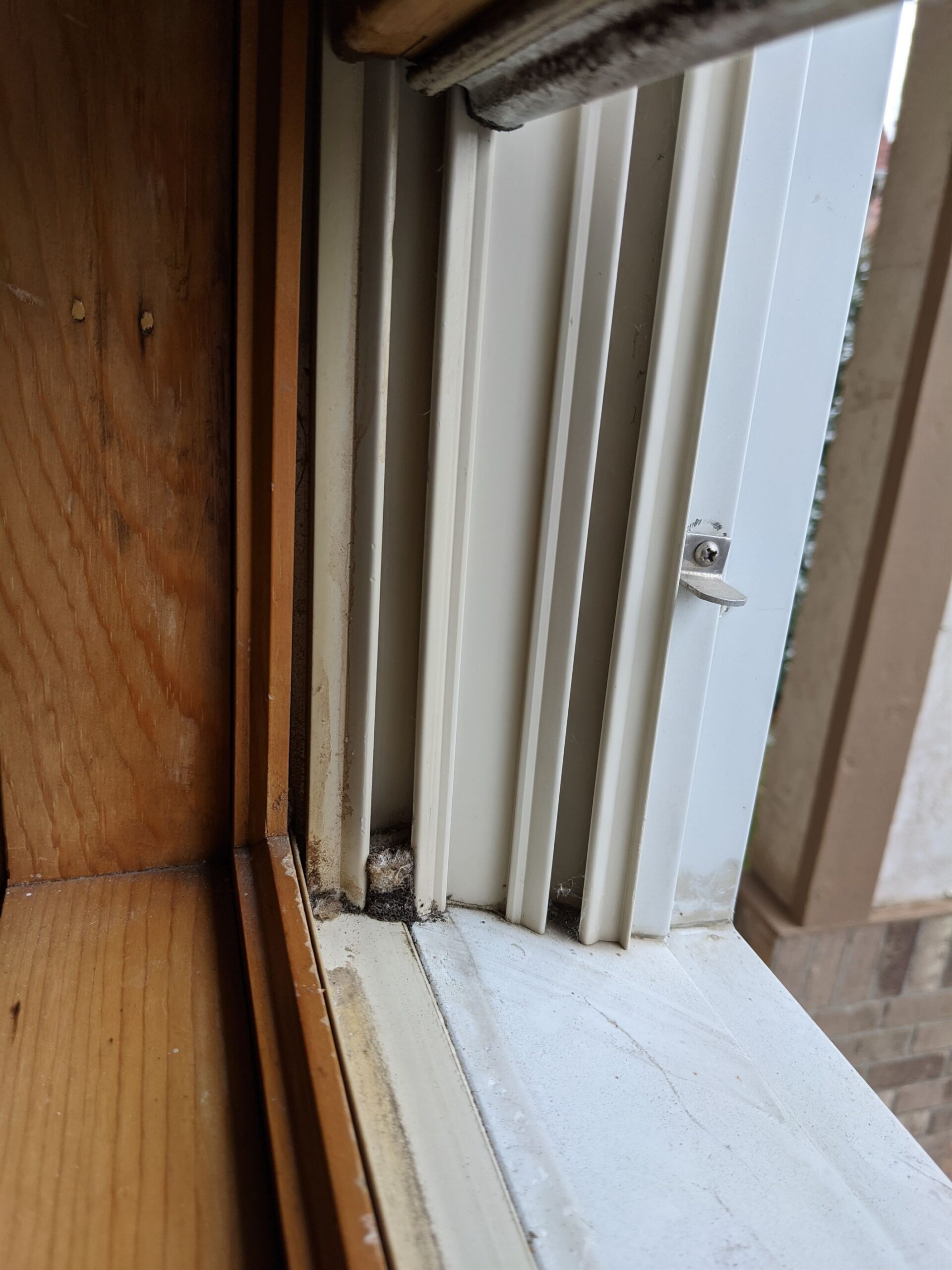
Understanding How Window Tracks Safeguard Smooth Operation
The proper alignment of these channels is critical to the smooth operation of sliding or double-hung windows. Each sash is meticulously inserted into these grooves, forming a secure path for it to travel. When the window is opened or closed, the sash travels inside these rails, which essentially direct its motion. The rails are intended to be slightly wider than the sash, giving it adequate space to move without friction or resistance.
This clever construction enables a smooth sliding action with no skidding or jerking. Weatherstripping is also commonly used on the tracks, which promotes an airtight seal when the window is closed and reduces noise when it is open. These rails, which are gently curved or inclined, aid in the sash’s gravity-defying rise by counterbalancing the weight to avoid sudden lowering or sticking midway, resulting in an uncompromisingly smooth functioning.
Keeping Window Tracks Clean for Enhanced Performance
While these tracks are necessary for the smooth functioning of sliding or double-hung windows, proper track maintenance is critical to ensuring their performance over time. Because they are designed as enclosed tunnels, these tracks are prone to collecting dust, grime, and even insects over time. If such impediments are not removed, they can cause inconsistent window movement, sash or window frame damage, and potentially severely limit the window’s lifespan.
Utilizing white lithium grease in window applications can keep your track system in peak performance. A little brush or vacuum cleaner is generally enough to remove light material from the tracks, while a moist cloth or a mild cleaning solution can handle difficult filth. Lubrication of moving components on a regular basis might also help to keep the windows gliding smoothly. This simple maintenance process guarantees that the window feature continues to perform flawlessly and quietly for many years.
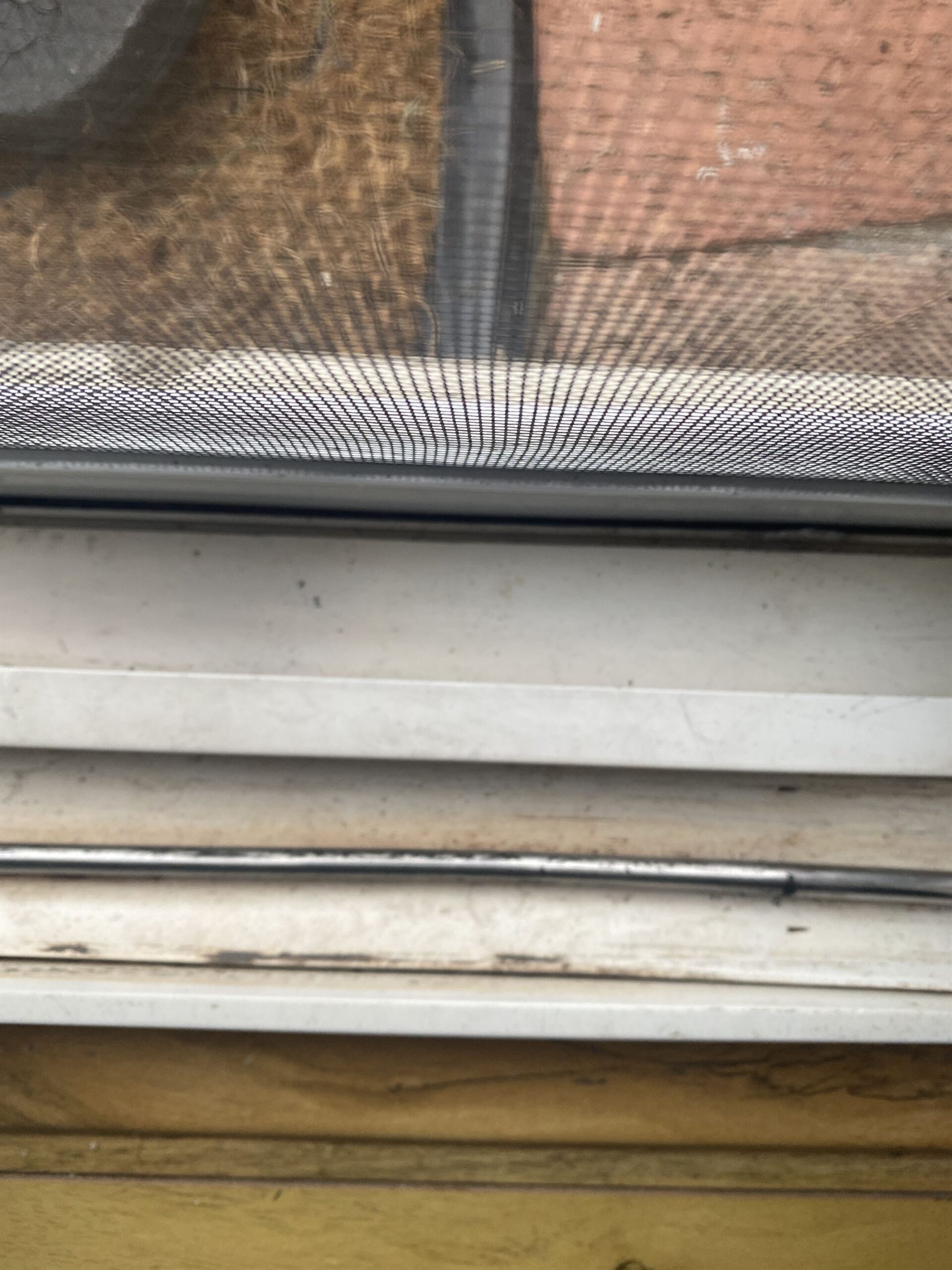
Challenges of Dirty or Damaged Window Tracks
The performance and well-being of sliding or double-hung windows are inextricably linked to the condition of the window tracks. When these tracks are not maintained or are broken, a variety of complications might emerge, potentially impeding the operation of the windows. If dirt and filth collect, they might act as sandpaper every time the sash is moved, making it difficult to open and close the window.
The resistance experienced during this action may cause extra strain on the handles or other fittings, perhaps resulting in severe damage. Furthermore, the deposit layer in the track causes faster wear and tear on the sash, diminishing its overall lifespan and efficiency. In extreme circumstances, the sash might become trapped in the tracks, impeding the window’s movement entirely. As a result, it is critical to keep the window tracks clean and clear of dirt in order for the window to operate smoothly and last as long as possible.
Chapter VI. Window Sash: A Key Player in Window Operation
Window sashes are unquestionably the foundation of any window construction, supporting all of the key components that comprise a working window. A window sash is the section of the window that houses and frames the glass, and it includes interrelated components such as mullions or muntins, which split the glass into panes, and glazing, which keeps the glass in place.
The sash is more than just a cosmetic feature; it is an essential component of the window’s anatomy, contributing significantly to its structural stability and functioning. Whether the windows are single, double-hung, or casement, the sash is critical to their operation since it controls the opening and closing mechanisms. The strength and shape of the window sash typically determine the efficacy of functioning in all window types.
How Sash Design and Material Influence Window Appearance
The window sash, while essentially practical, is important to the aesthetic appeal of both the window and the room it occupies. Its design, whether basic or elaborate, simplistic or vintage, can complement the overall architectural motif of the area, quietly improving its visual integrity. However, the sash’s significance extends beyond its visual value.
The material is critical to the window’s insulating effectiveness. For example, wood sashes, while traditional and elegant, are prone to warping and do not provide the best insulation. Vinyl or fiberglass sashes, on the other hand, are long-lasting and provide excellent insulation, keeping your house pleasant no matter what the weather outside. As a result, a correctly designed window sash may influence not only the window’s appearance but also its insulating capabilities, so adding to energy efficiency.
Critical Role of Properly Installed Window Sashes
A correctly installed window sash is the only way to ensure excellent performance and secure locking of windows. The perfection of this installation can provide a smooth glide or swing of the window, deciding whether it opens and closes without binding or sticking. When a window is closed, a well-fitted sash lines exactly with the frame, creating a tight seal that prevents drafts and maximizes energy efficiency.
Furthermore, correctly placed sashes ensure the use of secure locking mechanisms. This is critical for the occupants’ safety and security since it prevents undesired entry from the outside, therefore the necessity of proper window sash installation should not be overlooked.
How a Faulty Sash Can Lead to Issues
A defective window sash can cause a slew of problems that can escalate into greater concerns. The most pressing issue that homeowners generally encounter is operational challenges. A broken or misaligned sash can disrupt the smooth glide or swing of windows, making them difficult to open and close. This might cause unnecessary stress on the window’s hardware, hastening its wear and tear. Another major concern caused by a malfunctioning sash is the possibility of air leakage. If the sash does not fit exactly into the frame, gaps may appear around the window’s edges.
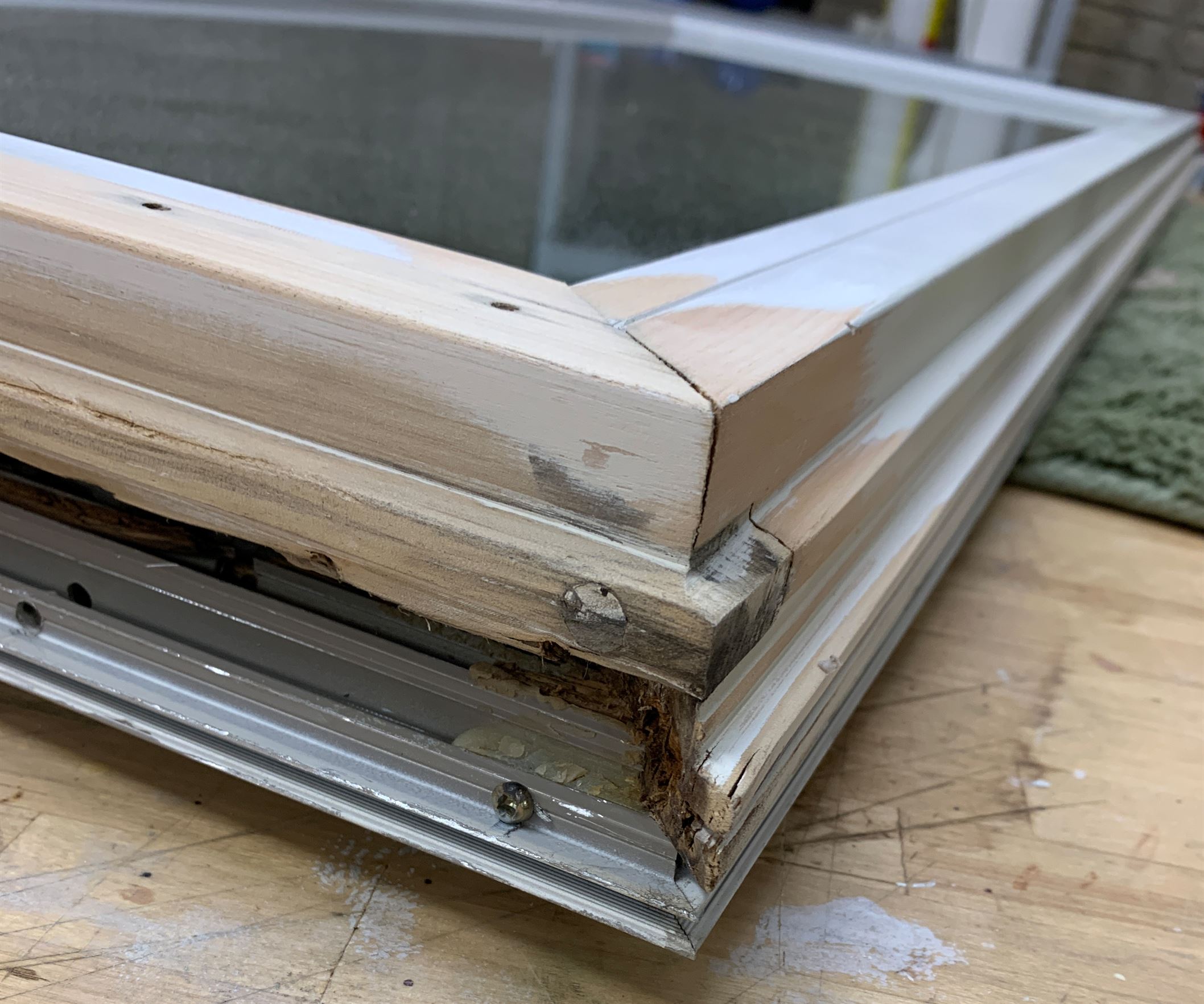
This not only disrupts the internal environment by allowing drafts, but it also results in higher energy bills due to poor heating and cooling. Furthermore, if a sash is broken or does not firmly retain the glass, the window panes might become unstable, leaving them prone to rattling or even breaking. As a result, ensuring the integrity and appropriate operation of the window sash is critical to maintaining the overall performance and safety of the complete window unit.
Chapter VII. Window Tilt Latches: Ensuring Stability
Windows are a complex assemblage of many components, each carefully planned and incorporated to facilitate specific functions. Among these different components, window tilt locks may appear trivial due to their tiny size, yet they play an important part in the operation of a window. Tilt latches, which are typically installed at the top of the sashes of a double-hung or single-hung window, are intended to fulfill a basic but critical function: firmly holding the window in place when it is opened.
This may appear little, but their function may affect the entire usefulness and safety of a window, allowing it to open and close smoothly without the sash falling down accidently. Tilt locks, despite their tiny size, play an obviously important part in guaranteeing the effective operation of your window.
Window Tilt Latches to Prevent Unintended Closing or Slamming
In essence, window tilt latches are safety mechanisms that give both constraint and control. Tilt locks are especially useful in casement windows, which open and close similarly to doors. These windows swing outward, making them more exposed to the power of severe winds, which may accidently slam them shut and inflict damage. When the tilt latches are engaged, they form a tight lock that keeps the sash from moving, preventing the windows from slamming shut or flapping in the wind.
These latches can also allow the window to remain open at a specific angle, allowing a sluice of regulated air without the risk of the window slamming shut. Essentially, tilt latches demonstrate the strength of minor components in managing window operation; without them, the protection and durability of the window units may be significantly reduced.
Compromised Tilt Latch Systems, from Pinched Fingers to Window Breakage
A window without a suitable tilt latch mechanism, or one that is malfunctioning, is not only a functional problem; it also offers serious safety dangers. In the absence of a properly functioning tilt latch, windows may close suddenly under the force of wind, posing a danger of finger pinches or other serious injuries. This abrupt closing might frighten occupants, particularly youngsters, and cause inadvertent damage to the window’s glass, frame, or other components.
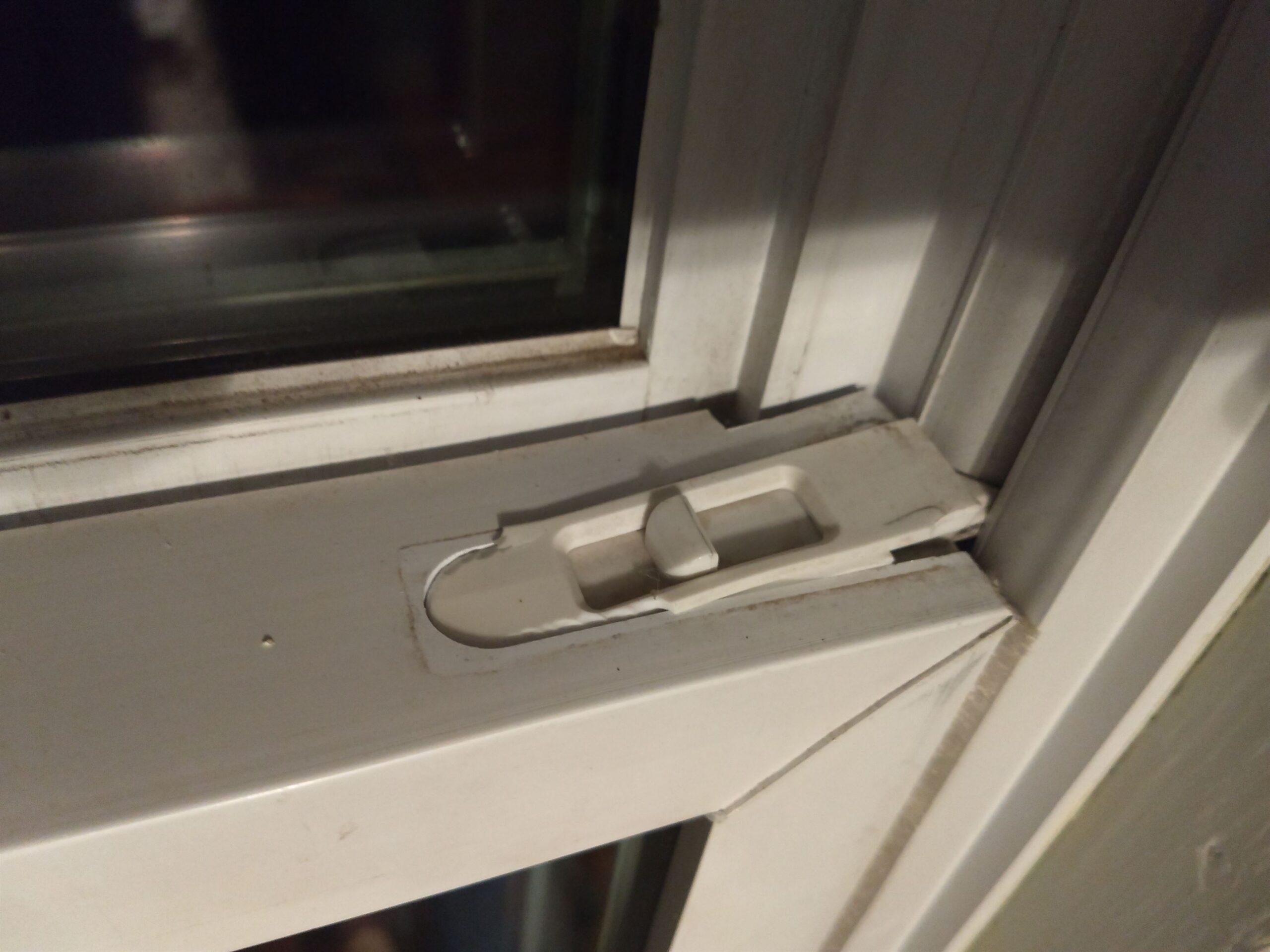
Even while cleaning or maintaining windows, the lack of a secure tilt latch might enable the window to unexpectedly close, posing comparable safety risks. While these situations demonstrate the seriousness of the safety issues connected with a faulty tilt latch system, they also highlight the need of having a working tilt latch system – not only to protect the window’s operation, but also to avoid potential injuries and damages.
Importance of Regular Inspection for Window Tilt Latches
Given the critical role that window tilt locks play in maintaining a safe and enjoyable window operating experience, frequent examination and repair of these components is required. The latches may become loose or fail to lock over time due to wear and tear or exposure to the environment. As a result, it is critical to regularly examine their condition, such as rusting of metal parts or breaking of plastic components.
Regular testing to ensure they can firmly keep the sash in place is also strongly advised. Following such maintenance measures ensures that the window stays may effectively provide safety and avoid unintentional closing. This not only extends the life of these critical components, lowering replacement or repair expenses, but it also provides piece of mind knowing that your windows are secure and safe.
Chapter VIII. Window Operators and their Significance
Different window styles require varied processes to function properly. Window operators, while probably new to some, are essential components in a subset of window types, particularly those that open outward, such as casement and awning windows. They have a unique opening mechanism that sets them apart from traditional sliding or double-hung windows.
A window operator is a crank-operated device that makes it easier to open and close windows. It allows the window sash to open outward with ease, making operation simple and convenient. These operators are often situated near the base of the window, assuring maximum functioning and simplicity of access, and are intended to give a calculated mechanical advantage that makes window operations simple, regardless of the size or weight of the sash.
How Window Operators Utilize a Crank Mechanism
The crank mechanism is crucial to the operation of window operators, a clever use of simple physics that makes opening and shutting windows easier. The crank handle, also known as the operator handle, turns a gear wheel within the operator. This gear wheel is then connected to an arm, which rotates and extends outward, opening the window sash.
Similarly, when the crank is rotated in the other way, the arm retracts, shutting the window. The mechanical advantage provided by the crank’s gear reduces the effort required for the entire action. This leverage enables even enormous, heavy windows to be handled effortlessly with a single twist of a handle, emphasizing the critical role window operators play in simplifying window use.
Common Issues Arising from Damaged or Broken Window Operators
Despite their efficient design and durable construction, window operators, like any mechanical equipment, are susceptible to wear and tear or breakage over time. One of the most prevalent concerns is the failure of the worm gear, which is the key component that transmits the rotation of the handle to the motion of the window. Constant usage, a lack of maintenance, or simply the passage of time can cause the teeth of the worm gear to wear out or break.
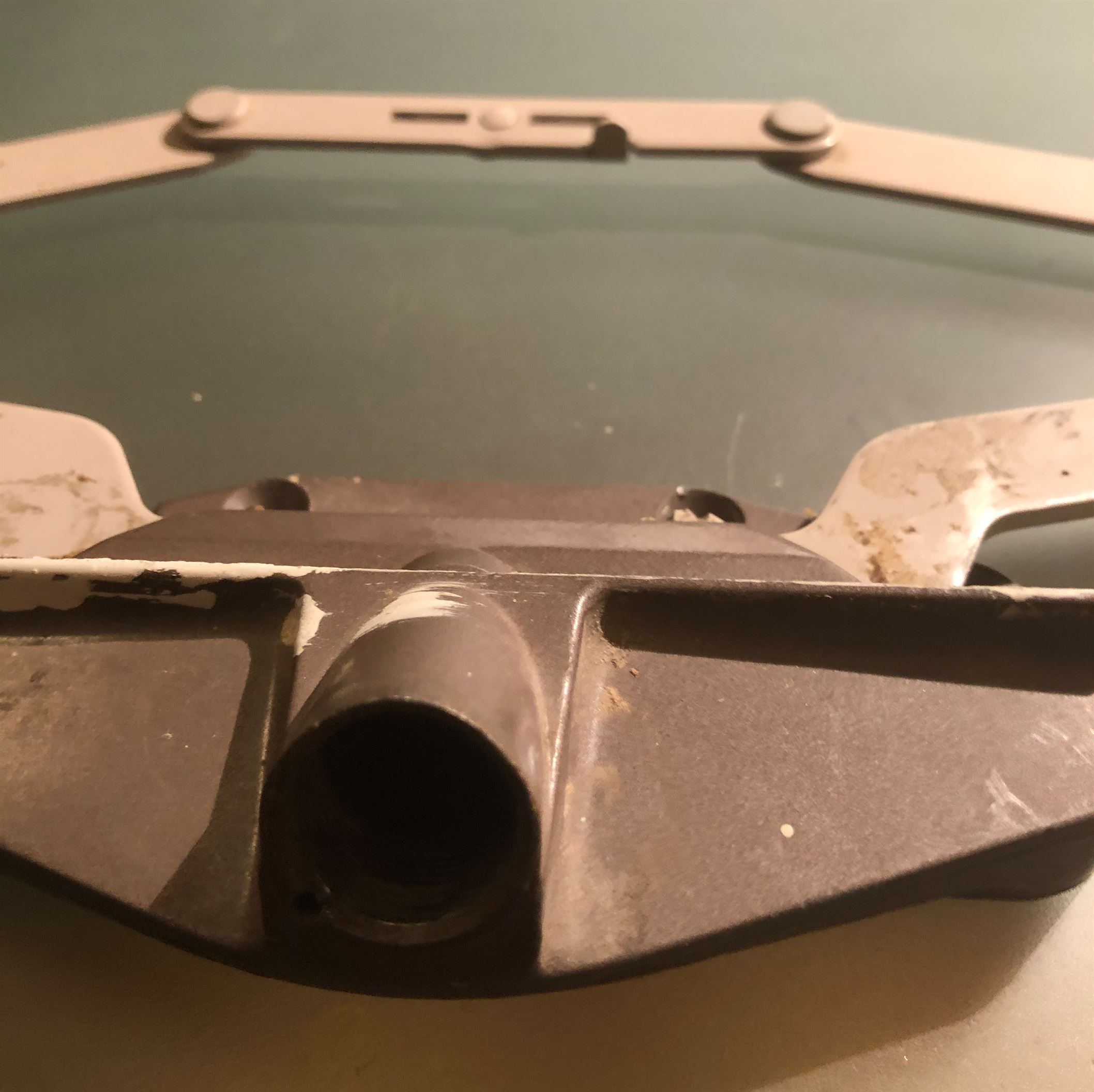
This prevents the crank handle from properly engaging the gear, resulting in a disconnect in the transfer of movement. As a result, twisting the handle produces no movement, making the window impossible to open or close using the operator. Rust, dirt accumulation, and insufficient lubrication can all exacerbate such problems. As a result, regular cleaning, sufficient lubrication, and prompt repairs are critical in preventing such problems and extending the life of window operators.
Regular Maintenance for Window Operators to Sustain Lasting Functionality
Window operators are the heart of particular window types, therefore correct installation and frequent maintenance are critical to ensuring long-term functioning and simplicity of use. The installation procedure requires precise attention, as any misalignment or inappropriate placement may impair the operator’s effectiveness and result in stiff, jerky window motions, or even quick degradation of its components. Similarly, frequent maintenance is critical to the longevity of window operators.
This often entails cleaning to eliminate dust or dirt and lubricating the moving parts for smooth operation. It’s also vital to check for signs of wear or damage on a regular basis, particularly on the worm gear, to spot any possible problems before they become a major issue. By following these guidelines, you can guarantee that your window operators stay in top condition, delivering a smooth and uncomplicated window operating experience for years to come.
Chapter IX. The Often-Overlooked Window Springs
Ensuring smooth functioning in windows, particularly those that travel upward or downward, such as single-hung or double-hung windows, necessitates the use of a very precise balancing system – window balances. These parts, which are generally hidden within the window frame, perform an important function in counterbalancing the weight of the window sash, allowing for smooth mobility.
Balances ensure that the window remains steady when opened to any height and does not crash shut when released. These devices employ a combination of springs and pulleys or a spiral rod mechanism, depending on the style, to counteract the weight of the window. Essentially, with their direction, even heavy windows may be moved with a gentle touch, and open sashes remain exactly where they are placed, demonstrating the essential importance of window balances in generating a pleasant operational experience.
How Window Springs Provide Essential Counterbalance
One of the most important components of window balance systems is the simple yet effective spring, which performs an excellent job counterbalancing the weight of the sashes. Whether you’re lowering or sliding your windows, the convenience and smoothness may be attributable to these powerful springs operating quietly in the background. In a normal design, these springs are connected to cables that support the weight of the window when it is opened or closed.
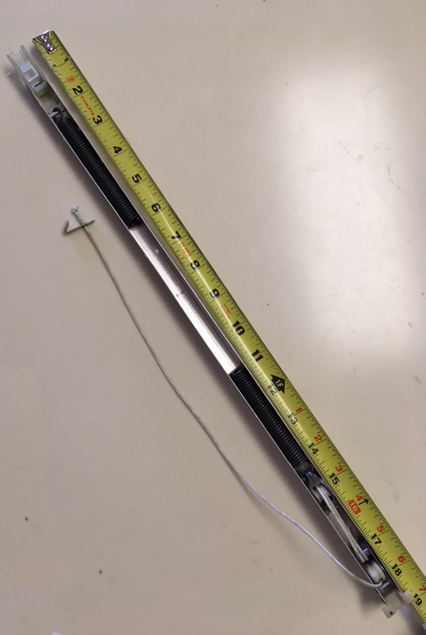
As you lift or slide the sash, the tension in the springs decreases, counteracting the weight of the sash. This approach reduces the amount of effort required to open and close the window, while also ensuring that the window remains in position while left open. This shows the indisputable function of window springs in ensuring that your windows operate simply and efficiently.
Well-Maintained Springs Extending the Lifespan of Your Windows
When determining the durability and functioning of a window, one important factor to examine is the condition of the window springs. This is because the success of well-balanced, easy-to-use windows is heavily reliant on the torsion in these springs. Window springs, like any other component that is subjected to continuous stress, can wear out or get broken. Such circumstances make windows difficult to open and close, and they may not stay open as long as they should.
It can also put excessive strain on the other components, potentially decreasing the lifespan of the complete window unit. As a result, it is critical to ensure that these springs are fully functional. This includes frequent inspection, cleaning, and lubrication, as well as the timely replacement of damaged springs. With correct care and maintenance of the window springs, one may increase not only their service life but also the overall efficacy and durability of the windows.
How Faulty Springs Can Lead to Window Operation Issues
Faulty window springs can cause a variety of problems, significantly affecting the window’s function and safety. One of the most obvious signs of a malfunctioning spring is the difficulty in raising or lowering the window sash. Without the springs’ counterbalancing force, the whole weight of the sash must be controlled manually, making opening and shutting the window a daunting task.
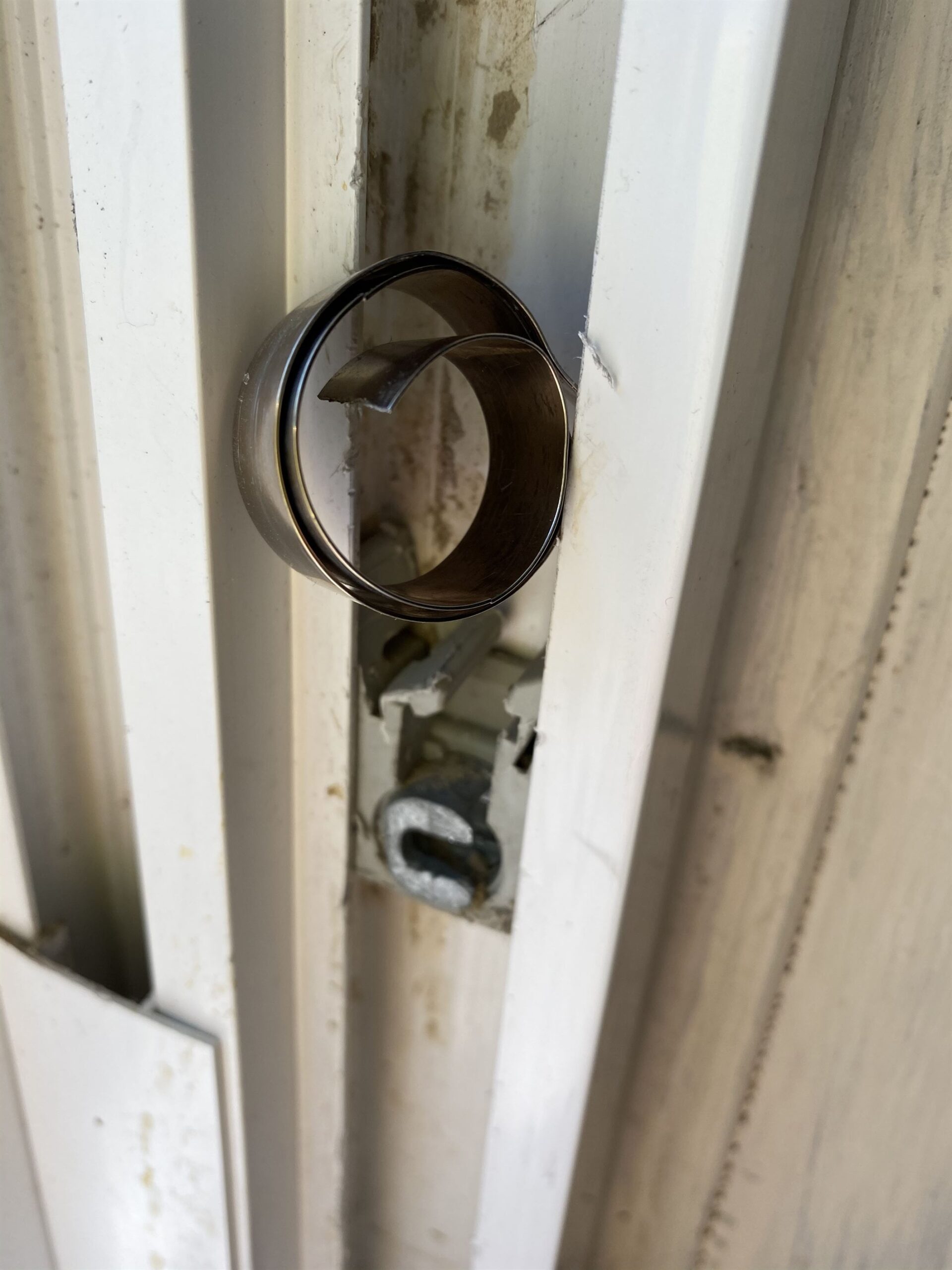
Furthermore, if the springs are not operating properly, the possibility of the window rapidly slamming shut when released increases dramatically, providing a serious safety concern, particularly for small children. Another undesirable effect might be an imbalance in window operation, in which one side glides easily while the other lags, causing the window to jam or bind. These difficulties highlight the seriousness of the problems that can result from malfunctioning springs, highlighting the importance of frequent examination and replacement of worn-out window springs to guarantee safe, smooth, and efficient window operation.
In Conclusion
Understanding the numerous complicated components of windows helps us appreciate their meticulous engineering and design. Tracks and runners, window sashes and tilt locks, and window operators and balances all play important roles in assuring our windows’ flawless operation, durability, and safety. Regular maintenance and care for these parts may help to extend the life of your windows, make them easier to operate, and keep your house secure.
At the core of it all, being familiar with these window components enables us to make educated decisions when it comes to repairs, upgrades, or replacements, which is critical for preserving the durability and aesthetics of both the windows and our houses as a whole. This book aims to provide fascinating insights into the world of window components, establishing the way for future informed debates about window design, operation, and maintenance.
Need a Part? We Identify and Ship Nationwide!
Send us over some good photos of your current hardware and we will match up what you have. We identify all window parts such as balances, operators, tilt latches, pivot bars, and more. We ship nationwide to all 50 states and Canada.
